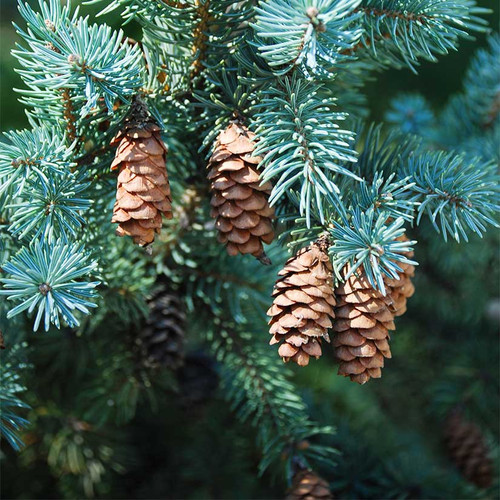Product Overview
Culture
Easily grown in average, acidic, medium moisture, well-drained soils in full sun. Tolerates some light shade. Prefers rich, moist soils. Although established plants have some drought tolerance, soils should be kept consistently moist and not allowed to dry out in the early years. Generally prefers cool climates and will struggle in the heat and humidity of the deep South.
'Montgomery' does not need pruning, however selective pruning can obviously influence both height and shape. Performs surprisingly well in the hot and humid St. Louis climate as long as specific cultural requirements are met.
Noteworthy Characteristics
Picea pungens, commonly called Colorado spruce (also blue spruce), is a medium to large, narrow, pyramidal conifer with horizontal branching to the ground. It typically grows 30-60’ tall in cultivation, but may reach 100’ or more where it grows naturally. It is native to the central Rocky Mountains from southern Montana and eastern Idaho south to New Mexico where it is typically found growing in moist locations from 6000 to 11000 feet in elevation. Stiff, bristly, four-angled, green to blue-green to silver-blue needles (to 1.5” long) point outward from the branches in all directions. Cylindrical light brown cones (to 4” long) have flexible scales. Dark gray bark furrows on mature trees. From a horticultural standpoint, trees with blue or silver blue foliage are generally more coveted than trees with green foliage.
Genus name is reportedly derived from the Latin word pix meaning pitch in reference to the sticky resin typically found in spruce bark.
Specific epithet means sharp-pointed in reference to the needles.
'Montgomery' (sometimes sold as 'R.H. Montgomery') is a slow-growing dwarf cultivar with a broad cone shape that grows 2-3' tall over 8 years with a similar spread. May eventually reach 6-8'+ in height unless pruned shorter. Features attractive silvery blue needles. Named after Col. R. H. Montgomery of Coscob, Connecticut.
Problems
No serious insect or disease problem. Susceptible to needle cast, canker and rust. Watch for aphids (particularly spruce gall aphids), scale, budworms and bagworms. Spider mite invasions can cause significant problems with new growth and overall tree health.
Garden Uses
Excellent specimen or accent for rock gardens or foundations. Also may be grown as a hedge, though the blue needle color is sometimes difficult to integrate into the landscape in large doses.








